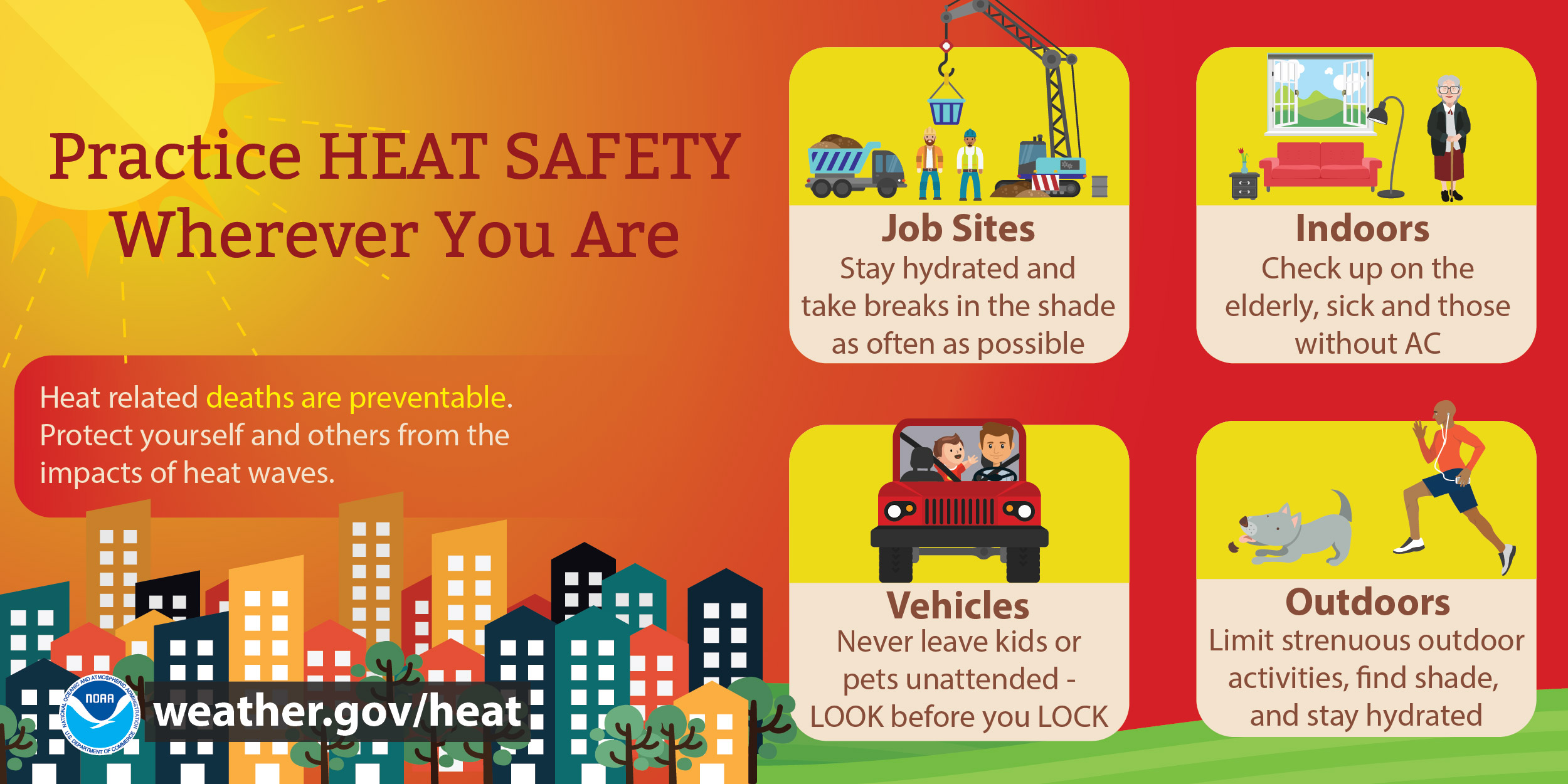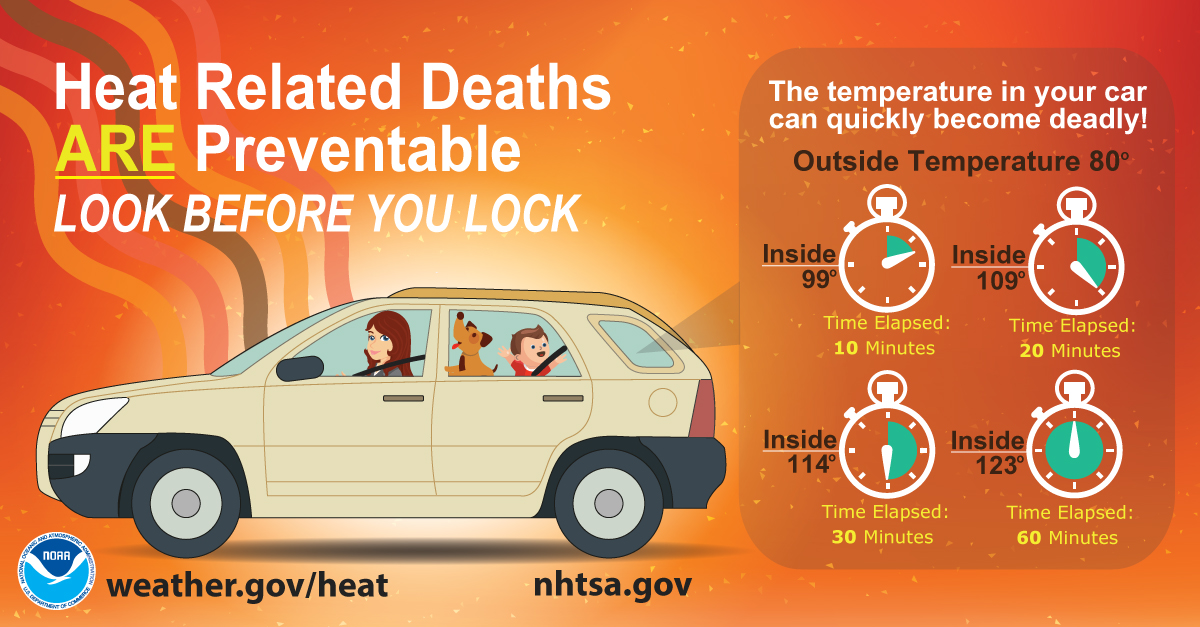
Being Prepared: Heat
But it’s a dry heat. If you live in New Mexico or the western United States, you’ve probably heard these words or even been guilty of saying them. But don’t be fooled! Heat, even dry heat, is an often underrated weather hazard. In fact, extreme heat has killed more people in the last ten years than any other type of weather phenomenon.
What is considered excessive heat will be dependent on where you live. For the Albuquerque NWS office, this is even more dependent on geographic location.
For mountain zones, Heat Advisories are issued when the heat index exceeds 95 degrees. Excessive Heat Warnings are issued when the heat index exceeds 100 degrees.
For central and western areas, Heat Advisories are issued when the heat index exceeds 100 degrees. Excessive Heat Warnings are issued when the heat index exceeds 105 degrees.
For the eastern plains, Heat Advisories are issued when the heat index exceeds 105 degrees. Excessive Heat Warnings are issued when the heat index exceeds 110 degrees.
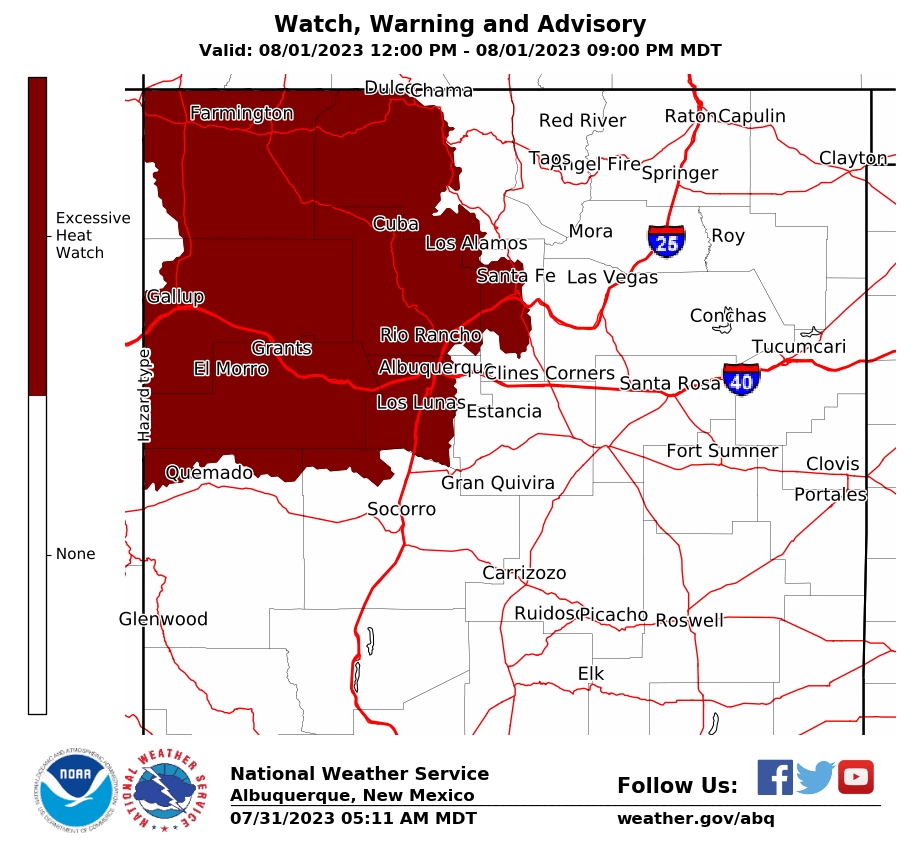
A hypothetical Heat Advisory for northwestern New Mexico. |
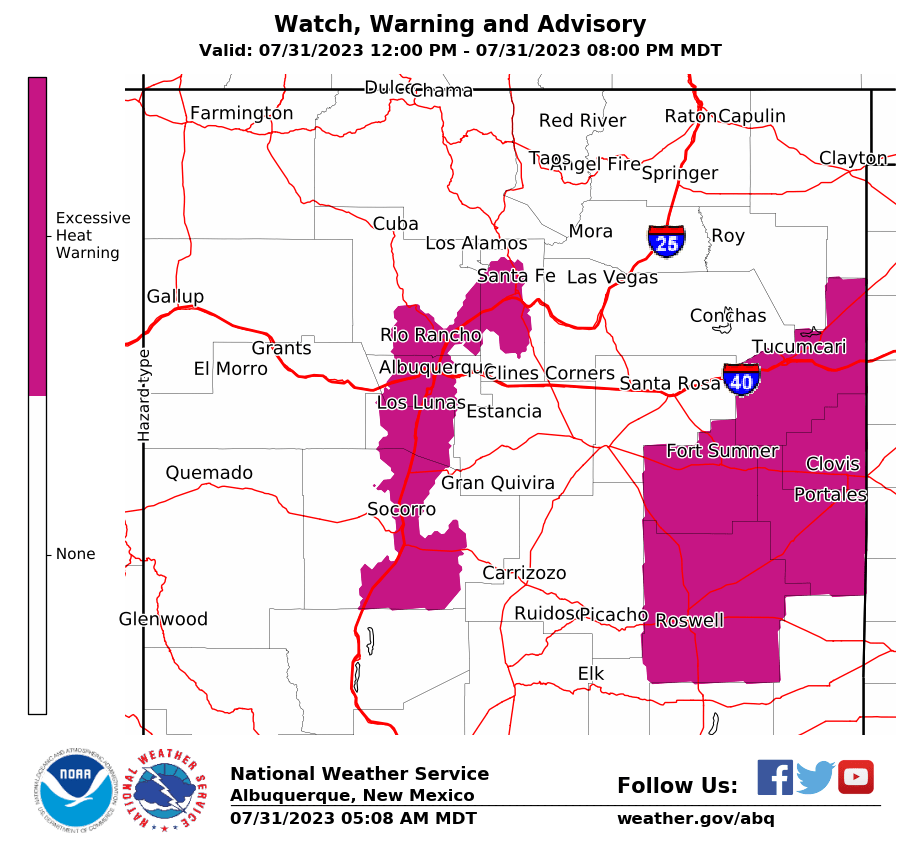
A hypothetical Excessive Heat Warning for central & east central New Mexico. |
Heat-related illnesses happen when the body is not able to properly cool itself. Sweating is the body’s natural response to cool itself, but sometimes, that’s not enough. Make sure you know the difference between heat exhaustion and heat stroke! Symptoms of heat exhaustion include heavy sweating, weakness or tiredness, cool, pale, and clammy skin, a fast or weak pulse, muscle cramps, dizziness, nausea, or vomiting. If you or someone you know is experiencing heat exhaustion, move to a cooler environment immediately, loosen clothing, and apply cool, wet cloths. If the person is vomiting or any symptoms last longer than one hour, seek medical attention immediately.
Heat stroke is the most serious form of heat-related illness and needs to be treated immediately. Symptoms of heat stroke include headaches, confusion, nausea, dizziness, fainting, loss of consciousness, and a body temperature above 103 degrees. If you or someone else is experiencing heat stroke, do not give the victim any fluids. Call 9-1-1 or go to a hospital immediately. Heat stroke can be fatal if not treated in time.
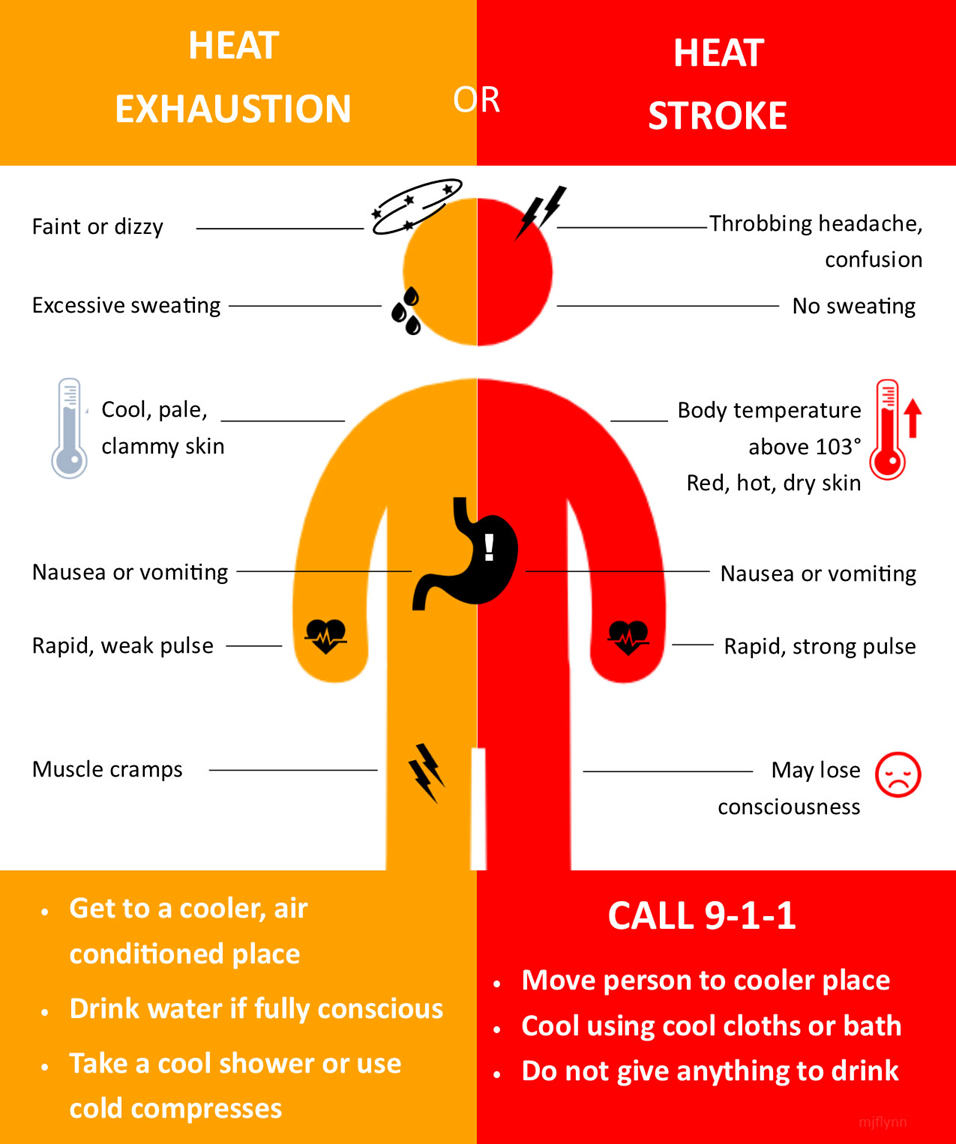
Be sure you’re keeping an eye on the forecast so that you’re prepared when extreme heat is expected. Things you can do ahead of time include covering your windows with drapes or shades, weather-stripping your door and windows, add insulation to keep the heat out, and install window air conditioners. Make sure you identify places in your community where you can go to get cool. Cooling centers are useful if you don’t have air conditioning or if you lose power during a heat wave.
